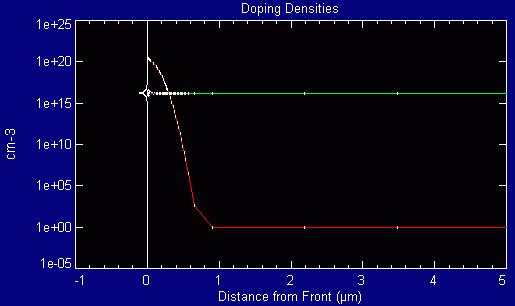


SiNx films used for antireflection coating on solar cells are modified to reduce its resistivity. To reduce or minimize PID, various efforts have been developed from the cell level to the system level. Studies of the PID mechanism in p-type solar cells showed that the Na ion decoration of the stacking fault in the silicon is responsible for the decrease in the shunt resistance after the PID test. Most of the PV modules already constructed are based on p-type crystalline silicon solar cells, and the various studies on PID focus on p-type silicon solar cells and modules. Frequent high-voltage stress causes a power drop in the modules, and this type of degradation is called potential induced degradation (PID). Solar panels, however, can be exposed to high-voltage stress up to several hundreds of volts between the grounded module frame and the solar cell.
Series resistance in pc1d series#
With the increase in solar energy generation, photovoltaic (PV) modules are connected in series for generating high voltages and power. The possible causes for the change in the external quantum efficiency (EQE) after PID are interpreted using PC1D and are discussed by comparing the experimental results with the simulation results. The electrical properties of PID in solar cells are observed with the light I-V, quantum efficiency (QE), and electroluminescence (EL). Further, the PID characteristics of n-type solar cells are compared with those of p-type solar cells. In this study, we investigated PID in n-type silicon solar cells with a front p+ emitter.

However, most of the photovoltaic modules already constructed are based on p-type silicon solar cells, and there are few studies on potential induced degradation (PID) in n-type solar cells. N-type silicon-based solar cells are currently being used for achieving high efficiency. Potential induced degradation of n-type crystalline silicon solar cells with p front junction


 0 kommentar(er)
0 kommentar(er)
